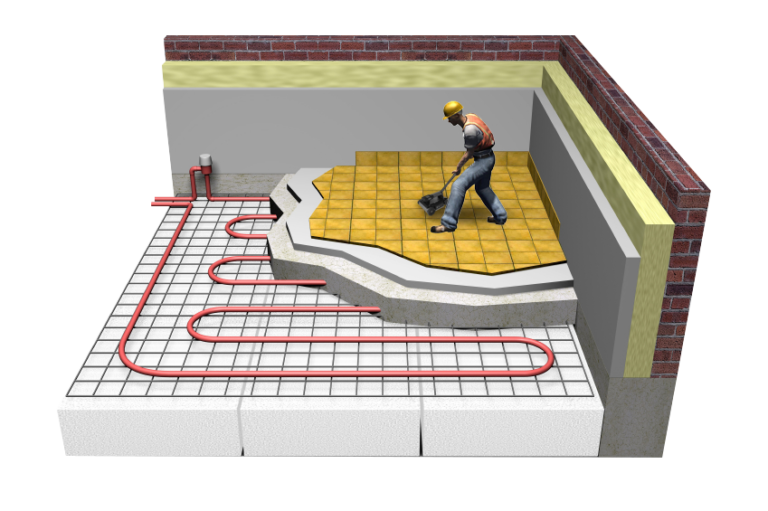RainierGPR Service Areas: Where We Offer Premier Concrete Scanning
RainierGPR Service Areas: Where We Offer Premier Concrete Scanning
Blog Article
Concrete Scanning: A Critical Step In The Direction Of Guaranteeing Architectural Integrity and Safety And Security
In the world of construction and infrastructure maintenance, the relevance of concrete scanning can not be overstated. This thorough process holds the vital to revealing prospective dangers concealed under the surface of relatively strong frameworks. By using innovative modern technology and techniques, concrete scanning functions as a pivotal device in making certain that the stability and safety of bridges and structures are maintained to the greatest standards. However, beyond its surface-level ramifications, the duty of concrete scanning expands much much deeper than meets the eye.
Significance of Concrete Scanning
Concrete scanning plays an essential duty in making certain the structural integrity and security of buildings and infrastructure tasks. By making use of sophisticated modern technologies such as ground-penetrating radar (GPR) and electro-magnetic induction, experts can non-destructively inspect concrete frameworks to spot prospective defects, voids, ingrained objects, and support format. This process enables very early detection of anomalies that can compromise the security of a structure, preventing pricey damages and making certain the safety and security of passengers.
Before boring, reducing, or coring right into concrete, scanning aids recognize the precise locations of rebar, post-tension cable televisions, and various other ingrained elements, minimizing the threat of unintentional hits that can lead to architectural weak points. In addition, concrete scanning aids in top quality control by validating the thickness of concrete covers and finding any discrepancies that may affect the overall resilience of the structure.
Technology for Concrete Examination

Advantages of Very Early Discovery
Timely detection of structural problems can substantially alleviate threats and guarantee the durability of building projects. By recognizing prospective issues beforehand in the building and construction process, stakeholders can take aggressive steps to address issues before they escalate right into larger and much more pricey troubles. One of the crucial advantages of early discovery is the avoidance of structural failures, which can present major safety and security threats and bring about task hold-ups and monetary losses.
Moreover, very early discovery enables timely fixings and upkeep, which can help prolong the life expectancy of the structure. By addressing concerns immediately, construction teams can prevent costly repairs or perhaps the need for early replacement of structural elements. This positive approach not just saves time and cash yet additionally improves the overall safety and security and longevity of the building task.
Furthermore, very early detection can boost job preparation and decision-making by offering stakeholders with beneficial insights right into the condition of the framework. Armed with this details, task managers can make informed options concerning building and construction products, methods, and timelines, causing much more effective and efficient project end results.
Making Certain Architectural Stability
Guaranteeing the architectural stability of a building and construction project is critical to its security and longevity. Architectural security refers to the capability of a building or framework to maintain its type and feature under environmental problems and numerous loads. To achieve this, extensive evaluation and surveillance of the structure are vital. Concrete scanning plays a critical role in guaranteeing architectural stability by discovering prospective issues such as gaps, delamination, or reinforcement deterioration that can endanger the stability of the framework with time.
By utilizing sophisticated scanning innovations like ground-penetrating radar (GPR) and electromagnetic induction, building experts can non-invasively check concrete structures to determine areas of issue below the surface. This proactive method enables for the early detection of weak points or issues, making it possible for timely repair services weblink or support to stop structural failures.
Routine concrete scanning during different building and construction stages and throughout the life process of a structure can aid preserve its stability, mitigate threats, and make sure the safety of owners. By prioritizing structural stability through concrete scanning, construction tasks can enhance their durability and sturdiness, ultimately adding to better safety and security and long life.

Avoiding Vital Failures
Carrying out regular inspections, such as concrete scanning, can reveal hidden defects like gaps, cracks, or deterioration that could endanger the stability of a structure. By making use of sophisticated scanning innovations like Ground Penetrating Radar (GPR) or Concrete X-ray, designers can non-destructively examine the problem of concrete and recognize weak factors that call for reinforcement or repair.

Verdict
Finally, concrete scanning plays an important role in making certain structural integrity and security by utilizing innovative technology for very early detection of possible issues. click This aggressive method aids avoid critical failings and ensures the security of frameworks. It is important to focus on concrete examination as a standard method to protect the longevity and safety of structures and framework.
Concrete scanning plays a vital function in guaranteeing the architectural integrity and security of structures and framework tasks. In addition, concrete scanning help in quality control by validating the thickness of concrete covers and discovering any kind of discrepancies that may impact the total longevity of the framework. Concrete scanning plays a vital role in guaranteeing architectural stability by identifying possible problems such as voids, delamination, or reinforcement deterioration that can compromise the integrity of the framework over time.

In final thought, concrete scanning plays an essential duty in making sure architectural integrity and security by using advanced innovation for early detection of prospective issues.
Report this page